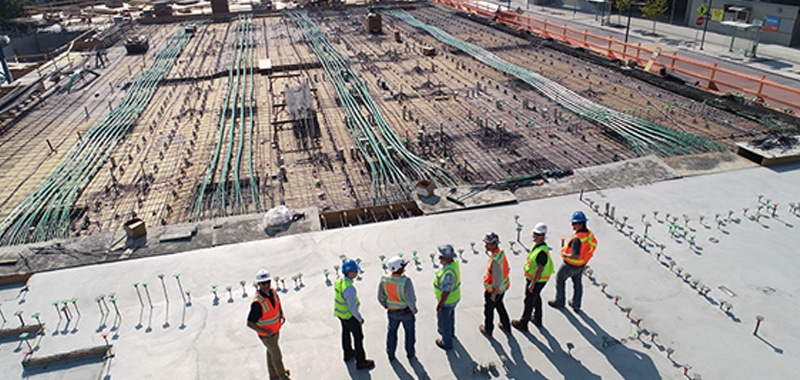- Advanced Work Packaging
- 05 Nov 2020
Introduction to Advanced Work Packaging (AWP)

What is Advanced Work Packaging?
Advanced Work Packaging (AWP), which is also known as construction driven planning is the term coined by Construction Industry Institute (CII). AWP is about organizing pre-construction phases in order to deliver optimal field delivery and execution effectiveness. AWP provides a structured, construction driven approach to work package development across engineering disciplines, procurement and construction. It is defined as the overall process flow of all the detailed work packages like the Engineering Work Packages (EWP), Construction Work packages (CWP) and the Installation Work Packages (IWP) for large projects.
Benefits of Advanced Work Packaging
As most of us know, the number of stakeholders in construction projects are very high. Though there are overall project plans available, discipline / trade wise planning and work package development is happening in a disorganized fragmented manner, without sufficient cohesion across disciplines to support construction. This creates lack of alignment of individual plans, resulting in work package dependency related issues during project execution, leading to delays and rework.
Study by Construction Industry Institute (CII) reveals that in construction projects, during the construction phase, the actual time on tools is only 37%. 15% of the workers time is wasted in waiting for material and tools. 8% of their time is spent in equipment / material movement. Crew movement consumes 15% of the time. Planning and early quits account for 11% and 14% respectively.

The main root cause is the lack of alignment of Engineering, Procurement and Construction within EPC projects. Advanced Work Packaging (AWP) is one of the many advancements along with BIM, Agile, Common Data Environments etc trying to address these issues.
Benefits reported after implementing AWP
Successful implementations of AWP have reported the following benefits;
- Around 25% improvement in productivity
- Cost below 10% of budget
- 0 lost time accident
- Project slightly ahead of schedule during planning and execution
- Minor changes to estimates
- Reworks substantially low
Before getting into further details of Advanced Work Packaging, let us try to understand the different types of work packages;
Construction Work Package (CWP)
A construction work package is an executable construction deliverable that defines in detail a specific scope of work and should include a budget and schedule that can be compared with actual performance. The scope of work is such that it does not overlap another CWP and can be used as a scoping document for Requests for Proposal and Contracts.
Engineering Work Package (EWP)
An engineering work package is an engineering deliverable that is used to develop CWPs and that defines a scope of work to support construction in the form of drawings, procurement deliverables, specifications and vendor support and that is released on an agreed upon sequence consistent with the CWP schedule. The scope of work is typically by discipline by area.
Installation Work Package (IWP)
A installation work package is a detailed execution plan that ensures all elements necessary to complete the scope of the IWP are organized and delivered before work is started to enable craft persons to perform quality work in a safe, effective and efficient manner. Generally, the scope of work associated with the IWP should be small enough that it could be completed by a single foremen team in a one- or two-week time frame.
Procurement Work Package (PWP)
A procurement work package comprises of a complete list of supplied all supplied material and equipment for an EWP / CWP. The scope of a PWP can be specific to an engineered piece of equipment or bulk supply. PWP enables the alignment of procurement sequences with the path of construction.
Process of planning AWP deliverables

The whole process comprises of the front-end planning, detailed engineering, work face planning and the construction &commissioning.
The front-end planning comprises of project set up and interactive planning to establish the path of construction.
The front-end planning is followed by the detailed engineering where the EWP release plan and the CWP release plans are prepared to support construction.
The Detailed engineering is followed by the Work face planning. During work phase planning, the planned sequence of the IWP development to support planned crew activities are performed.
The work phase planning is followed by the actual construction & commissioning. During this phase the monitoring and control of the hierarchical level of the construction work areas (CWA), engineering work packages (EWP), installation work packages (IWP) and the procurement work packages (PWP) are performed.
Since procurement is continuous supporting all phases of the project, with primary focus on construction, PWP release plan is treated as a parallel activity supporting all phases.
Challenges in implementing AWP
- AWP program is not owner driven
- Construction company not available to provide timely path of construction input
- External push back from engineering design and procurement
- External push back from owner
- Low level of AWP maturity among contractors
- Poor integration of AWP information system with other corporate systems
- Lack of clear understanding of AWP methodology and processes
- Design engineering organization not supportive of AWP
Most of the AWP implementation challenges are due to lack of buy in by stakeholders. AWP is a cultural change. Like every organizational change, AWP implementation must be driven by the senior management of the Owner, Contractors and Sub-contractors, from the early stages of the project. Since the objective of this article is to provide the reader a good understanding of Advanced Work Packaging, benefits and challenges, I am not getting into the implementation steps. I will be writing another detailed article on implementation of AWP soon.
References :
Construction work packages best practices guideline by Construction Owners Association, Alberta.
Construction Institute web site
Expert in agile, predictive and hybrid project management. Researches on the application of Artificial Intelligence for better project outcomes. Works as a domain expert at Wrench Academy, the knowledge management division of Wrench Solutions, the makers of Smart Project Digital PMO.
Archives
- April 2025
- March 2025
- February 2025
- January 2025
- November 2024
- October 2024
- September 2024
- August 2024
- July 2024
- June 2024
- May 2024
- April 2024
- March 2024
- January 2024
- December 2023
- November 2023
- September 2023
- August 2023
- July 2023
- June 2023
- May 2023
- April 2023
- March 2023
- February 2023
- January 2023
- December 2022
- November 2022
- September 2022
- June 2022
- May 2022
- April 2022
- March 2022
- January 2022
- November 2021
- October 2021
- July 2021
- June 2021
- May 2021
- March 2021
- February 2021
- January 2021
- December 2020
- November 2020
- September 2020
- August 2020
- June 2020
- April 2020
- March 2020
- February 2020
- January 2020
- November 2019
- October 2019
- September 2019
- August 2019
- April 2019
- March 2019
- December 2018
- October 2018
- September 2018
- August 2018
- July 2018
- June 2018
- May 2018
- April 2018
- January 2018
- November 2017
- October 2017
- September 2017
- May 2017
- April 2017
- March 2017
- February 2017
- January 2017
